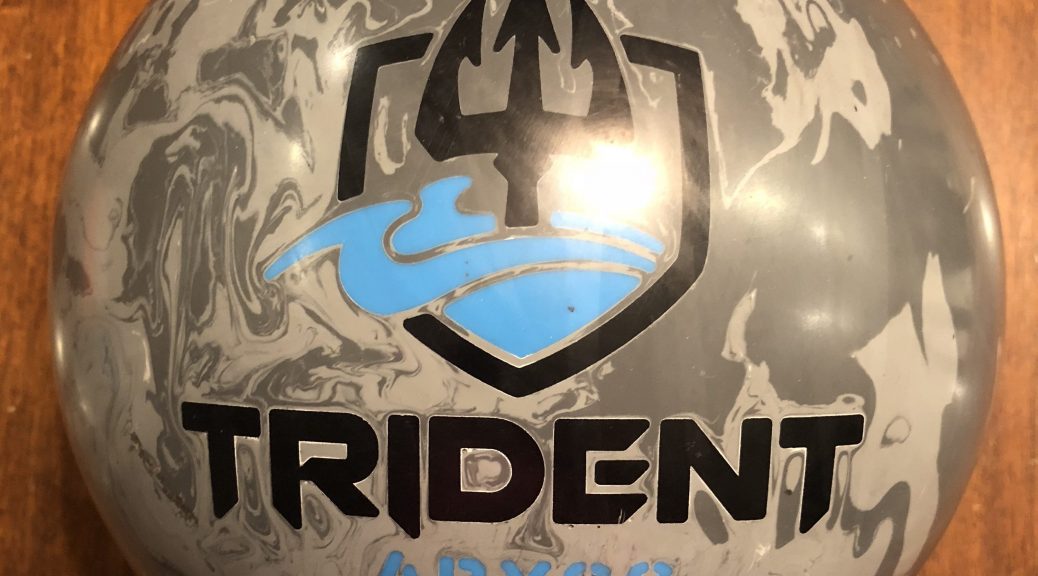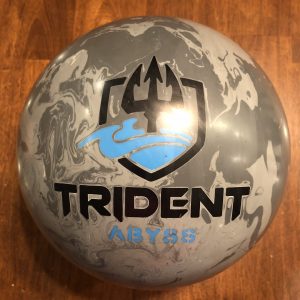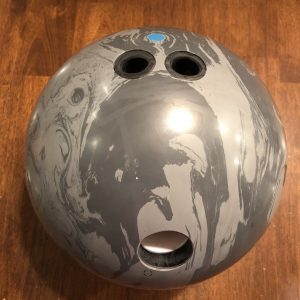Welcome to our Tutorial Series. Today I want to cover surface changes and how they affect ball motion.
This is part 2, using a strong ball, the Motiv Trident Abyss to show you the transition through surface changes. This is less about the ball and more about how strong asyms react to surface changes.
As mentioned in Part 1, there are a lot of nuances and our sport can be really complicated. A lot of factors affect what you see. There’s the bowler, speed, revs, tilt, rotation. There’s the lane surface, topography, surface type, material, age. There’s the lane pattern, long, medium, short, high, medium, low volume. There’s the ball, innate cover strength, core strength.
So here we try to normalize all the items above and simply look at the impact of coverstock finish on laneplay. We normalized here with a strong top line asymmetric solid. I am the bowler, medium speed, medium revs, 6-10 degrees of tilt, 60 degrees of axis rotation give or take. The pattern is our normal fresh house test pattern 40 ft, 23ml of oil. We are using DigiTrax as the CATS software.
Jumping right in, we polished the Trident Abyss to start through our progression. We used a step 2 type compound to give it some polish but keeping some underlying grit. Right away, it’s very tricky for me. Surprisingly the ball doesn’t really want to shape. It seems to dislike the polish on this fresh shot. Bear with me because you will see the sweet spot is really nice later on. With polish the ball had to be played very directly. DigiTrax says I’m generating 5.8 degrees of entry angle with a breakpoint at 39ft at the 6 board. To my eye, this surface gave me no error room at all. It neutered a strong ball, regardless of what Digitrax might show you on one perfect shot.
So I wanted to move on straight away from this finish to get some abralon on it and I started at 4000. This finish was night and day from the polish. Instantly, the ball read 1 or so foot earlier and went through the nose. I moved something like 6 with my feet and 3 at the arrows. Now the ball is generating 6.7 degrees of entry angle, with the breakpoint distance 1.5 feet longer at the 7 board. Still, I wasn’t feeling like this is the surface the cover preferred.
Moving on to 2000 and now I think we are in business. This is clearly where this ball wants to be. Why? It seems that the surface finish is matching up to the cover and core strength just right to make it explosive. This is a smooth but deceptively strong piece. It’s not super obvious but DigiTrax showed an average of 7.6 degrees of entry angle with the breakpoint distance right around 41.5 feet and the 7 board. The ball seemed to have the most room here and just really wanted to turn over. I might typically say over 7 degrees is a lot, but it didn’t feel uncontrollable in this instance. This is most definitely the sweet spot in my eyes for this particular strong asym.
So let’s keep going to see what happens next. On to the 1000 grit finish. I have to say that at this finish, the ball still had decent room. It still rolls heavy through the pins and that’s something not obvious on DigiTrax. 18 to 7 or 20 to 9, there was room there. Entry angle kicks down a bit to around a more sane 6 degrees which makes sense as you move the breakpoint in. Now the breakpoint distance is nearer to 43.5 feet at the 9 board. Looks like 1000-2000 for the Abyss is right where it wants to be, with 2000 being the stronger backend motion, while 1000 being the stronger midlane control motion.
Makes sense so far?
Alright moving onto the last step at 500 grit. Here, you see just like we saw with the HyRoad X surface tutorial, 500 actually caused us to move back left. Too much energy is depleted from the deeper position for the ball to make it up the hill. However moving between 15-17 at the arrows yielded a strong motion but one that I psychologically felt like I had to press a bit. This amount of surface is not needed in this scenario but to show you what happens, we get a bit left, breakpoint goes down a bit to around 43ft at the 8 board. We did actually pick up entry angle to around 6.5 as we moved left. Think about it a bit, you basically have the core starting up a bit sooner, allowing the ball to drive harder while you have a little less energy depletion from side to side since we straightened out a touch.
Alright what did we learn? With the Motiv Trident Abyss as the strong asym solid test mule, the sweet spot appears to be 1000-2000, as opposed to the 4000-3000 on the Storm HyRoad X. This is a torquier asymmetric core. It’s more dense and “center-heavy”. So in the solid, it just seemed that giving the cover some teeth matched the time the core turned over which amplified the move down lane. When the timing of this transition isn’t matched, the ball reaction doesn’t appear to be ideal. Again this isn’t about the Abyss specifically. It’s just a bit of information to think about. Surface changes reaction time, i.e., how long before friction takes over. The core dynamics are dictated by the shape and RG of the core. There’s more to it but simply, core dynamics dictate when the core turns over. If you match the timing of those two on the particular condition, you get a sweet spot of amplification. That was clear on the Abyss at 1000-2000 grit.
There you have it. Hopefully this video gave you some insight into how surface changes affect a strong solid asym. Also, remember that a video with just music and all strikes can not translate the nuances of ball reaction. Neither can thro-bots as humans bowl, not machines. We make mistakes. We need to understand miss room. Take it all in but information is power. Good Luck!



